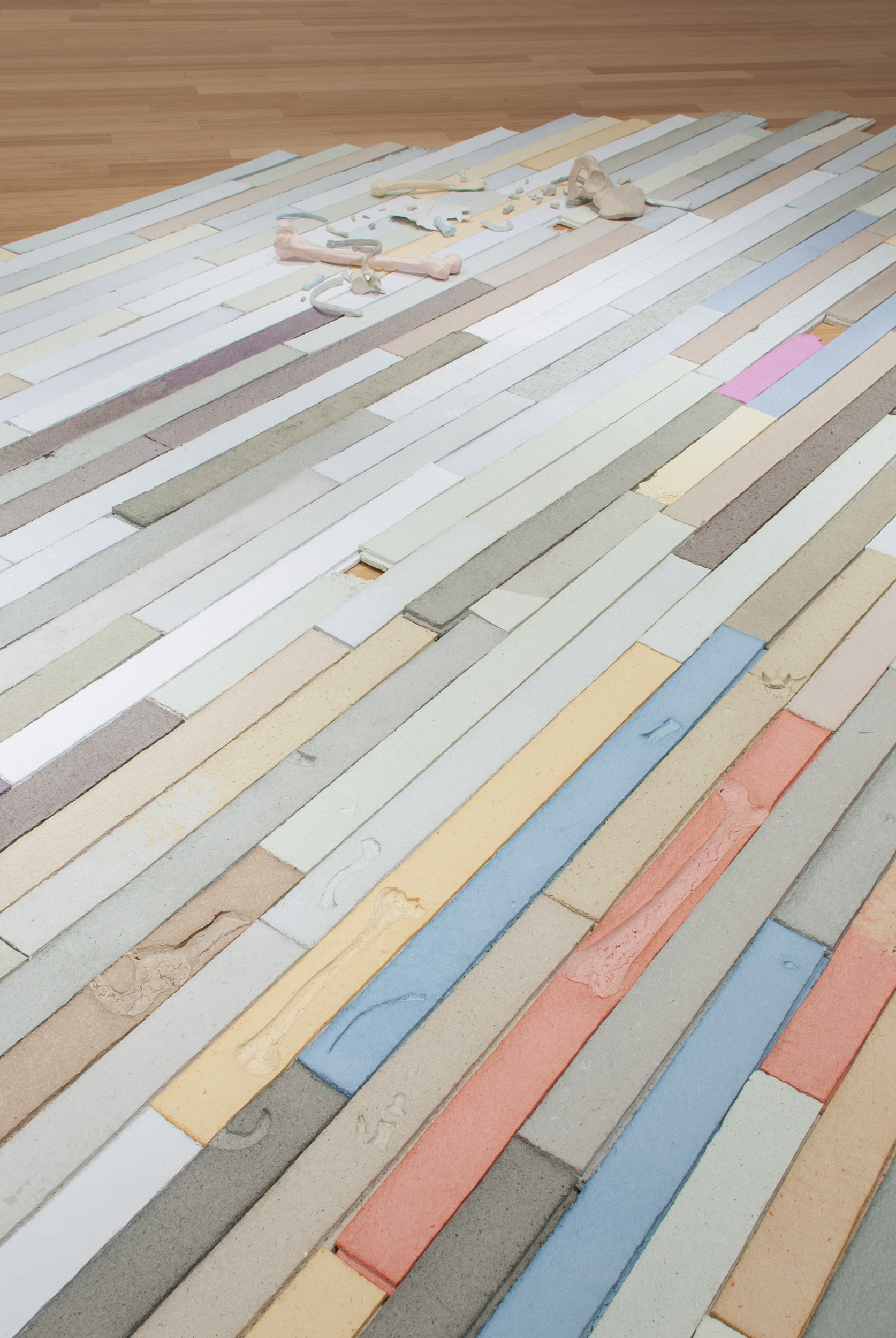My ongoing Studiolo project began in 2011 in “conversation” with the Gubbio Studiolo (ca.1478–1482), a room on permanent exhibit at the Metropolitan Museum of Art. The Gubbio Studiolo was created entirely in wood-inlay intarsia, a form of marquetry. One of the original functions of the Gubbio Studiolo was to act as an aid for associative thinking. My work is my own portable studiolo — extractions from a space where contemplation can go hand in hand with forgetting. In place of wood, I chose paper for its ease of processing and its role as a physical medium for communication.
Through graphite on paper and cut paper inlay, the drawings develop into abstracted visual forms. All of the drawings are worked on simultaneously and I usually lay one on top of the other when I make cuts so the pieces that are extracted are an exact match. Those pieces are then transplanted and inset within other drawings. Through this process, each drawing contains fragments of the others, just as our thoughts bridge to all other thoughts within our minds through a network of associations.
The time intensive nature of this work led me to wonder what would happen if I could fast forward time — what if I continued to cut into a drawing 1,000 times? 10,000 times? Eventually, it would become pulp. With this in mind, I began to shred old, failed drawings and other papers, creating pulp to work with as a sculptural medium. The pulp contains no added dyes or colorants — different colors are the result of sorting papers before beginning the pulping process. These sculptures are the result of this reprocessing of information, physical cairns amid a stream of thought.
Often the drawings and sculptures have words or phrases embedded within them. These are usually related to some personal anxiety. The words themselves also reflect human language, and how it forms a rickety and ever changing framework to which our thoughts adhere and find meaning.
All of the works develop and evolve over a number of years. Some will never be finished. They are all moments within a stream of thinking and forgetting — records of memories lost, found, and transforming within an ocean of information.
Read a review of the project by art critic and Chicago Tribune columnist Lori Waxman as part of her 60 Wrd/Min project (2019).
























































































































































